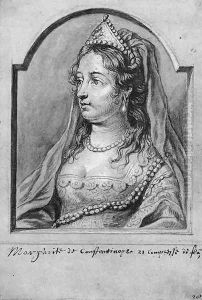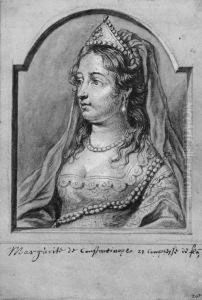Johannes Meyssens Paintings
Johannes Meyssens was a Flemish Baroque artist, engraver, and print publisher born in 1612 in Brussels, Spanish Netherlands (modern-day Belgium). Meyssens is best known for his significant contribution to the art of engraving and his role in documenting the visages of his contemporaries, particularly those involved in the arts and sciences across Europe during the 17th century. His work provides valuable insights into the cultural and intellectual milieu of his time, capturing the likenesses of notable figures in a manner that was both detailed and expressive.
Meyssens' career was marked by his meticulous approach to engraving, which involved the careful incision of designs onto metal plates, usually copper, from which multiple prints could then be produced. This technique allowed for the wide dissemination of images, and Meyssens exploited it not only to portray individuals but also to replicate works of art by other artists, thereby contributing to the spread of artistic styles and ideas.
In 1649, Meyssens published a significant book titled "Image de divers hommes d'esprit sublime," which featured a collection of portraits of eminent European artists of his time. This publication was not only a showcase of his skill as an engraver but also an invaluable historical document, preserving the features of many artists whose faces might otherwise have been forgotten. Meyssens' work in this area was pioneering, laying the groundwork for future biographical and iconographical studies of artists.
Apart from his contributions to engraving and publishing, Meyssens was also involved in the art community in Antwerp, where he lived and worked for most of his life. He was a member of the Guild of Saint Luke, the city's guild for artists and craftsmen, which played a crucial role in the artistic life of the region. Meyssens' interactions with other artists and intellectuals of his time enriched his work and allowed him to stay abreast of the latest developments in the art world.
Johannes Meyssens passed away in 1670 in Antwerp. His legacy endures through his engravings and publications, which continue to be studied and admired for their historical significance and artistic merit. Through his efforts to document his contemporaries, Meyssens contributed to the preservation of the cultural heritage of the 17th century, making his work invaluable to historians and art enthusiasts alike.

